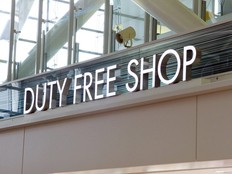CHARLEBOIS: How the feds made your groceries more expensive
U.S. food inflation has continued to cool since March, while Canada’s has nearly tripled over the same period

Article content
It was expected, but still jarring. In April, food inflation in Canada surged to 3.8% — a full 2.1 percentage points above the national inflation rate, and nearly double the U.S. rate of 2%. Once again, food is the primary driver behind Canada’s headline inflation, amplifying affordability concerns from coast to coast.
Behind that 3.8% figure lie significant increases across key food categories. Meat prices climbed 5.8% year-over-year, with beef leading the pack at a staggering 16.5%. Egg prices rose 3.9%, while fresh fruit and vegetable prices increased by 5.0% and 3.7%, respectively. These aren’t anomalies. They reflect underlying cost pressures exacerbated by recent shifts in trade policy and supply chain strategy.
Since March, when both Canada and the United States implemented a new round of tariffs, the divergence in outcomes has been striking. U.S. food inflation has continued to cool, while Canada’s has nearly tripled over the same period.
Tripled.
In two integrated economies, this growing disparity should raise red flags.
The root causes are increasingly evident. Ottawa’s earlier decision to implement counter-tariffs disrupted long-standing North American procurement systems. In response, Canadian grocers began pivoting away from U.S. suppliers — particularly in categories like fresh produce and frozen foods — and turned to costlier or less efficient alternatives. The results are now showing up on the grocery bill.
Fortunately, that policy direction has changed. According to a recent report from Oxford Economics, Prime Minister Mark Carney quietly eliminated many of the counter-tariffs that had been inflating food costs. The decision, while politically delicate, was economically sound — and long overdue. Easing those restrictions is already beginning to relieve pressure along the supply chain. Over time, this could help stabilize or even slow food price growth.
But broader context matters. Among G7 nations, Canada now has the second-highest food inflation rate — behind only Japan. Food price increases in France, Germany, Italy, the United Kingdom, and the United States remain well below Canada’s. That begs the question: Why is food more expensive in Canada than in almost every other advanced economy?
The answer is not just international volatility or climate shocks. It’s also about domestic choices. Tariffs, protectionist procurement practices, and structurally limited trade flexibility have created a uniquely Canadian inflation narrative — one driven more by internal policy than by external pressures.
And Canada’s geoeconomic leverage simply doesn’t compare to that of the United States. Not even close. That’s why Carney’s reversal on food-related tariffs represents an opportunity — to reset policy priorities and adopt a more pragmatic, less performative approach to affordability.
Canadians should welcome this shift. But they also deserve transparency. Food inflation cannot be solely blamed on global disruptions or seasonal cycles. It’s time we acknowledged how much of it is homegrown.
Moving forward, federal and provincial governments must coordinate more effectively, communicate with greater clarity, and ensure that access to affordable, nutritious food remains a national priority.
RECOMMENDED VIDEO
Of course, there’s nothing inherently wrong with patriotic consumerism. But “maplewashing” — the marketing of imported goods under misleading “Canadian” banners — is misleading and risks undermining public trust. Worse, it can distort markets and push prices even higher. Grocers should not abuse.
As for the federal government, symbols like “Elbows Up” and “Canada’s Not For Sale” may have mobilized support during a volatile political moment, but they should never substitute for sound economic governance. Rhetoric can only go so far — and, in some cases, it blinds policymakers to the very consequences of their actions.
Canada’s food inflation story didn’t have to unfold this way. Now that we have an opportunity to correct course, let’s not waste it.
— Dr. Sylvain Charlebois is the Director of the Agri-Food Analytics Lab at Dalhousie University and co-host of The Food Professor Podcast














Postmedia is committed to maintaining a lively but civil forum for discussion. Please keep comments relevant and respectful. Comments may take up to an hour to appear on the site. You will receive an email if there is a reply to your comment, an update to a thread you follow or if a user you follow comments. Visit our Community Guidelines for more information.